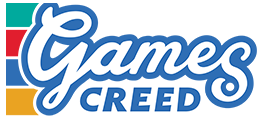New reports suggest Sony’s next-gen console and handheld will share the exact same lineup of games.
The next wave of Sony hardware might work better together than any other PlayStation ecosystem. Recent talk about the rumored PlayStation Portable 3 (also called “Canis” in internal papers) has led to more rumors about the company’s long-term plans, especially since news about the PlayStation 6’s development is moving quickly. Early signs show that the handheld and console may not only share architecture or be able to play games from each other’s libraries, but also have a single library of games.
There were rumors that the PSP3 would be able to play PlayStation 5 versions of new games during the expected cross-gen period. Reports, on the other hand, have pushed for a much bigger form. He said that private documents show that both Orion (the code name for PS6) and Canis are from the same generation and need to be able to run the same software.
If that’s true, it would be a big change from how Sony usually works, where handhelds like the PSP and PS Vita had their own development paths. Instead, PlayStation’s next portable system might be marketed as a full-fledged partner to the PS6 instead of a separate device for lighter games.
Documents show that the PlayStation 6 and its handheld controller must be able to play the same games.
In a recent report, there was the question of whether the handheld could actually run PlayStation 4, PlayStation 5, and some PlayStation 6 games. This means that every PS6 game would come out at the same time on both systems, without having to rely on patches made just for portable devices or older versions that have been scaled down.
People used to think that the handheld would be able to run PS5 games in low-power modes, but new information suggests that PS6 games will be made with both systems in mind from the start.
With this kind of design, the handheld version of a PS6 game might run faster than PS5 games that were later fixed to work on the portable, since those games wouldn’t have been made to work with the handheld’s architecture from the start. Players who want a smooth experience, whether they’re docked or on the go, may benefit from the unified development platform.
Will unified hardware make it harder for developers to make PS6 power-ups?

Even though people are excited about the idea, the method brings up a very important concern. Some people are worried that if developers have to make sure their PS6 games also work on a handheld device, it could cause the same problems that happened when developers had to make games for the Xbox Series X and Series S, which had very different performance levels.
According to Sony’s leaked specs, the handheld and console will have similar core architecture, though they will obviously have different levels of speed. This could make cross-development less of a problem, but the industry will be watching closely to see if the mobile becomes a problem for getting the most out of the PS6.
Still, the portable’s reported ability to dock may make it better than other hybrid platforms. With a design concept similar to the Switch and full support for PS6 games, the device could be used as both a handheld and a light living room console, so people wouldn’t have to buy as many PlayStation hardware pieces.
Like the Switch, but with full PS6 games.
Sony may be positioning the platform as an all-in-one solution for players who want to be able to switch between different types of play if the handheld really does handle full PS6 games. The device could let you play games on the go or while docked to your TV, and it would work with all PS5 and PS6 games.
Industry reports say Sony is getting close to the first chip production phase for the PlayStation 6, which is making people even more excited about the hardware. More leaks show that early chip production for the handheld version is planned for next year.
This means that work is starting to speed up on both systems. As we get closer to the release of the sixth generation of Sony’s consoles, the story of the unified environment may become one of its most important features.















